Spain Travel Guide – The 10 Best Cities To Visit in Spain
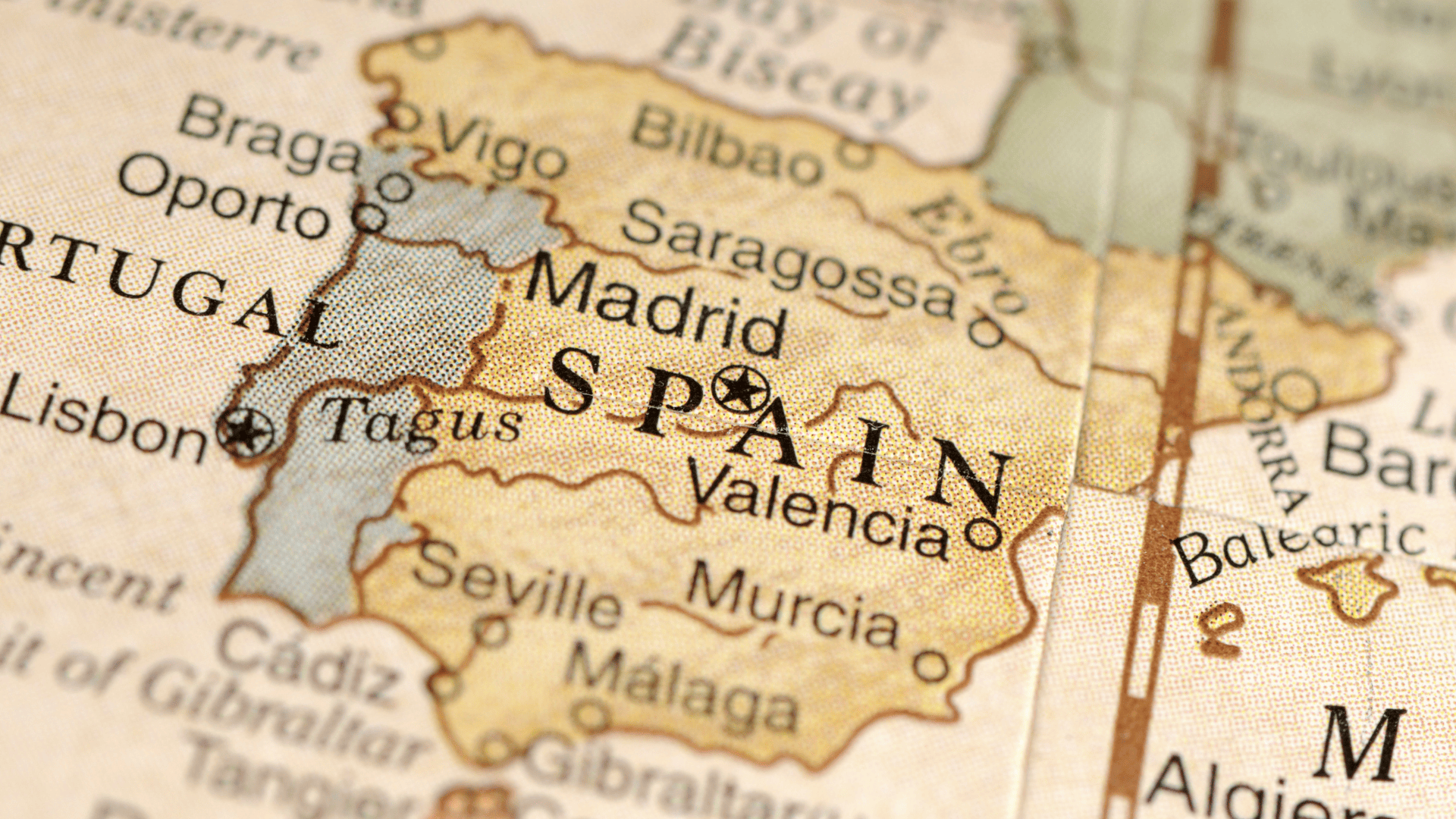
The best cities to visit in Spain are among the most popular destinations globally. Many people know about Madrid and Barcelona, but there are so many other cities worth visiting in this country! Of course, what you like determines which cities you’ll like. The best cities to visit in Spain are listed below in no specific order.
1. Seville
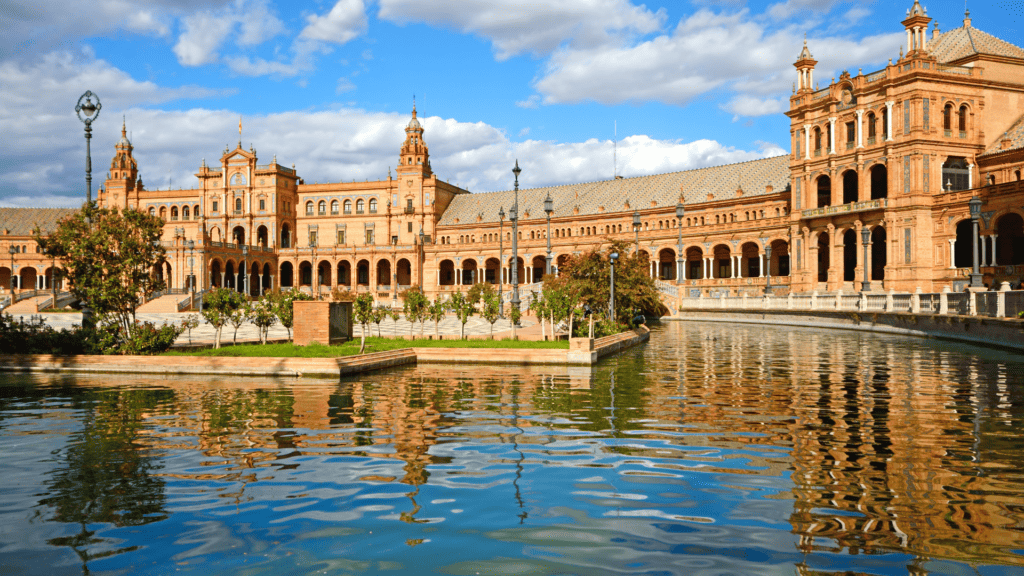
Although Seville is not Spain’s largest city, there are plenty of things to see and do. Compared to Madrid or Barcelona, we believe it offers much more. One of the most important sites for Islamic architecture in Spain is the magnificent Alcazar castle, which was once under Muslim rule.
Take a stroll through the magnificent Plaza de España, Spain’s most beautiful square. Apart from that, there are a number of impressive palaces, including the Casa de Pilatos and Palacios de las Dueñas. A variety of palaces surround Seville and are testament to the city’s golden age when new world riches overflowed.
Seville’s Cathedral is also a reminder of its grandeur from the past. In terms of size, it is the largest Gothic building in the world. It also has a bell tower that was the minaret of a former mosque. The Giralda tower, as it’s known locally, has become an icon of Seville.
Once you’ve seen the main sights, stroll through Santa Cruz’s charming old Jewish neighborhood. Enjoy a drink on a sunny terrace while listening to flamenco music and smelling orange blossoms. Don’t forget to catch a flamenco show while in Seville! This passionate art form was born in this city.
2. Barcelona
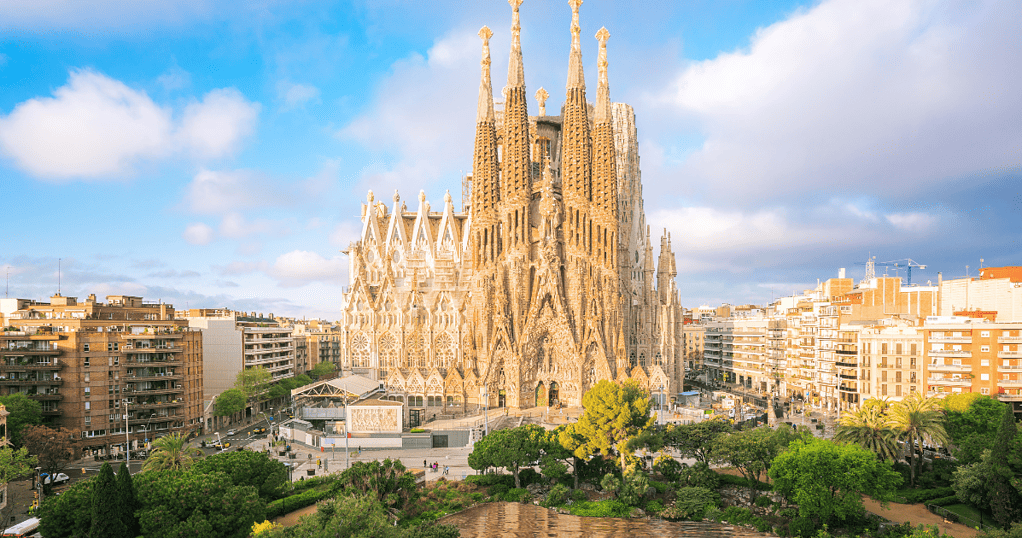
Catalonia’s cosmopolitan capital, Barcelona, is located on Spain’s Mediterranean coast. It is perhaps most famous for being the muse of the modernist architect Antoni Gaudí. He is known for using organic shapes in his buildings that are completely out of the ordinary. Barcelona is full of his innovative designs – seven of them are UNESCO World Heritage Sites.
The Sagrada Familia church is Gaudí’s largest project and it’s still under construction since 1882. He devoted his life to building it until his death in 1926. While in Barcelona, you must check out the fairytale-like church with its combination of Gothic and Art Nouveau styles.
In addition to seeing all the Gaudí sites, there is much more to do in Barcelona. A pedestrian street lined with large trees, small shops, cafes, and flower stalls, La Rambla is one of the most famous in the city. Discover Barcelona’s fresh produce and colorful fruits at La Boqueria Market (Mercat de la Boqueria) just off La Rambla.
There is also an old Gothic quarter in Barcelona that will transport you back in time. Afterwards, you can relax on the sandy beaches of the city once your feet have worn out from exploring.
3. San Sebastian
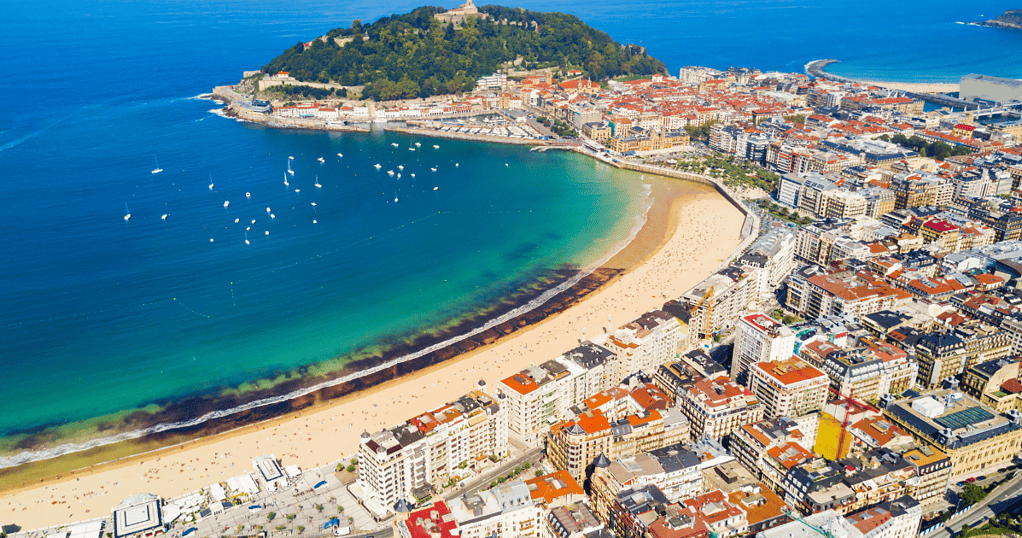
Located along the Cantabrian coast of Northern Spain, San Sebastian is home to 3 sandy beaches. One of the most famous and beautiful urban beaches in Europe is La Concha.
San Sebastian is a beautiful city in general. Our favorite way to describe it is as a mini Paris on the water. The Paris comparison doesn’t end there. In terms of Basque gastronomy, the city is the mecca. There is no doubt that San Sebastian is the finest place to sample the food of the Basque Country, which is known for some of the best cuisine in Spain.
Get started by sampling pintxos, which are small bites similar to tapas. Most bars will have these tasty bites all over their counter. The cycle usually begins with one or two pintxos, followed by a drink and then on to the next bar.
Don’t fill up solely on pintxos, though! The restaurants in San Sebastian are also well known, especially the high-end ones. A total of six restaurants are rated with 14 Michelin stars in the city. Akelarre, Arzak, and Martin Berasategui all have three stars. World’s 50 Best Restaurants 2022 ranks Mugaritz as the 21st best restaurant in the world.
4. Madrid
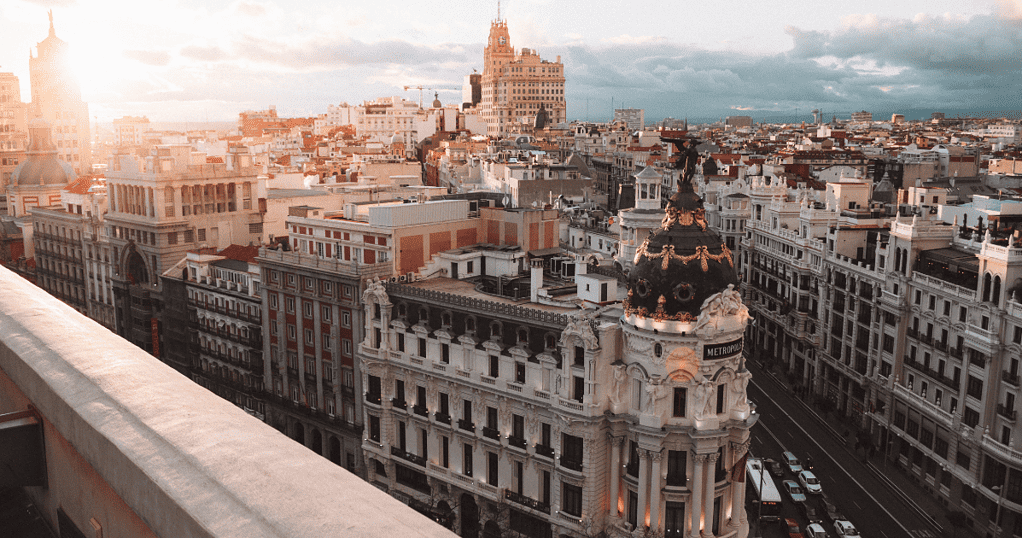
Madrid, the capital city of Spain, is located in the very center of the country. It has been Spain’s capital since 1606. There is still a monarchy in the country today, and the royal palace in Madrid is one of the most impressive in the world. In addition to housing an impressive art collection, the Palacio Real is the largest royal palace in western Europe with 3000 rooms. Tours are available of the royal palace, the gardens, and the kitchen.
Museums of fine art are also popular in Madrid. Three of Europe’s best art museums make up the “Golden Triangle of Art.” At the Prado Museum, you’ll find Renaissance & Baroque paintings by some of the best artists of all time. Among the displays at the Reina Sofia Museum is Pablo Picasso’s Guernica painting, which is one of his most famous works. Last but not least, the Thyssen Museum fills in the historical gaps of the other two museums. You should not miss these three museums if you are into art.
There is a lot to discover and explore in Madrid, Spain’s largest city. El Retiro Park is a large, elegant garden that was owned by the royal family until the 19th century. A paddleboat can be rented on the Grand Pond and you can admire the striking Crystal Palace glasshouse. Madrid contains two of the most beautiful squares, Puerta del Sol and Plaza Mayor, as well as the lively Gran Vía, which is sometimes called the Spanish Broadway.
5. Granada
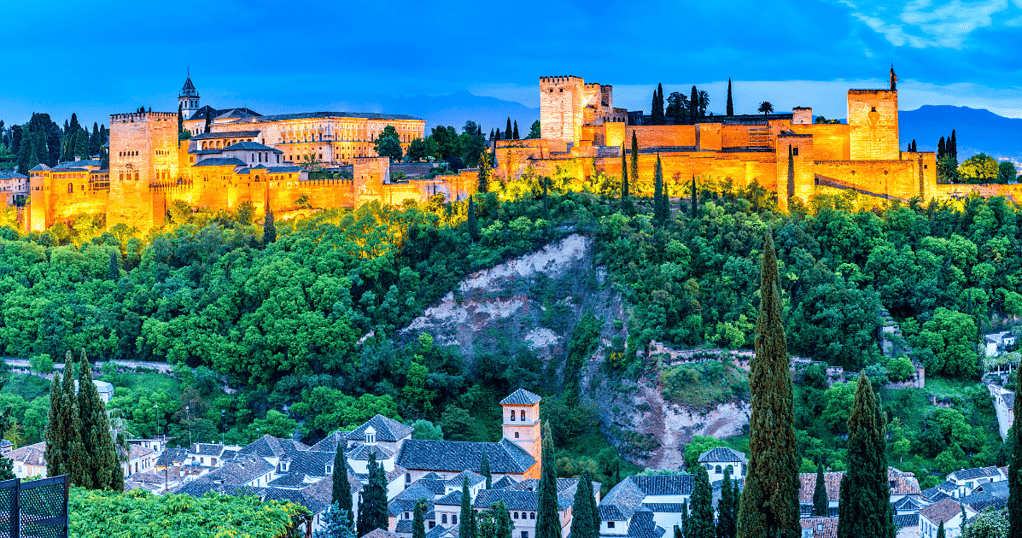
Most people visit Granada because of the Alhambra Palace. In terms of top attractions in Spain, it is easy to argue that the Alhambra tops the list. Granada’s golden age, which flourished from the 9th to the 15th century, is perfectly symbolized by this outstanding example of Moorish architecture.
There are a number of palaces, fortresses, and gardens within the majestic Alhambra complex. Taking in all the beauty of the place will take you a minimum of three hours.
The narrow winding streets of Albaicin also reflect Granada’s Moorish heritage. Located on a hillside, this traditional neighborhood offers incredible views of the Alhambra, especially at sunset.
Sacromonte, a gypsy neighborhood, is also worth visiting. Throughout the centuries, the local community has carved its houses into the mountainside. Granada’s Sacromonte caves are the best place to see live flamenco performances! Sacromonte is one of the birthplaces of flamenco music.
6. Palma De Mallorca

In the Mediterranean Sea, just east of mainland Spain, Palma de Mallorca is the capital of the island of Mallorca. Throughout history, Palma has been an important trade city because of its location. Founded by the Romans, it was later conquered by the Moors of Northern Africa before being retaken by Christians in 1229.
In these time periods, there are many architectural gems left over, such as the seafront cathedral known as “la seu”. When lit up at night, the levantine Gothic design is impressive. The Almudaina Royal Palace was built during the Moorish era and is located next to the cathedral. Another Gothic masterpiece with striking spiraling columns is the Lonja de Palma, a former market.
There are many stunning modernist and art nouveau buildings in Palma’s old town. The city is full of boutique design hotels and trendy restaurants. There is even a beach in the city as well as a seaside promenade where you can watch people and enjoy the nightlife.
The city of Palma is a wonderful place on a wonderful island. Take time to visit some of the picturesque villages nearby, as well as Mallorca’s stunning beaches.
7. Cordoba
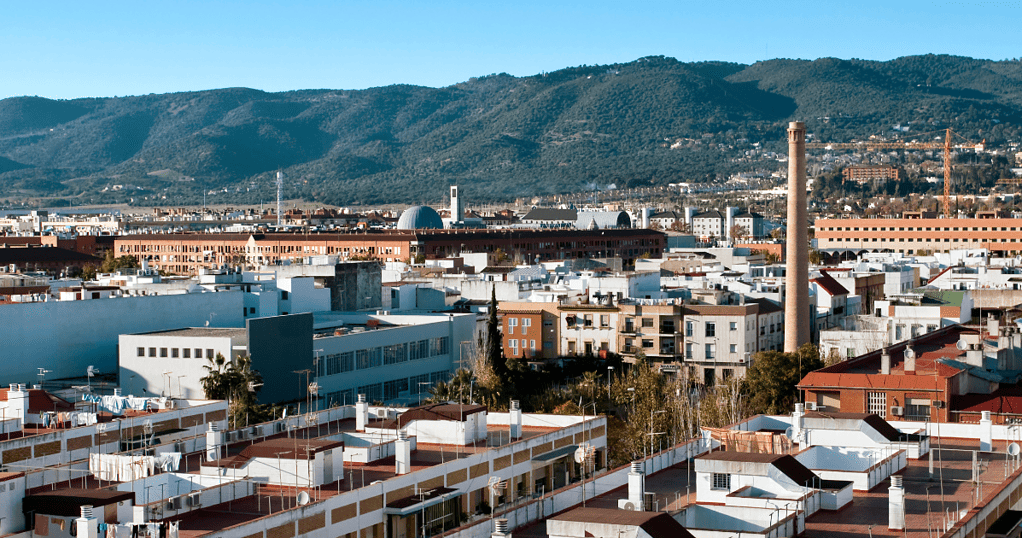
In the Andalusia region, Cordoba is a small laid-back city. However, this small city contains one of the most mind-blowing buildings in the world. Mezquita, or the Great Mosque of Cordoba, dates back to 784 AD. An area approximately the size of four football fields is covered by this massive Moorish construction, which is held up by 856 “recycled” Roman columns. Through most of the mosque, double arches made of alternating red and white bricks allow for unobstructed views through most of the mosque.
It would already be extraordinary if the Mezquita were just a Moorish building. However, the most intriguing part of the mosque is that after the Christians reconquered Cordoba in 1236, they didn’t destroy it because of its beauty. They consecrated the building and turned it into a church. After a few hundred years, they built a Gothic cathedral in the middle of the mosque!
It is likely that you will rub your eyes in disbelief when you first see this melange of architecture. There is something beautiful and insane about the Mezquita.
There is also a charming Jewish quarter in the city, as well as the Alcazar de Cordoba fortress with an immaculate garden. There are many reasons to visit Cordoba, but the Mezquita alone makes it a must-see city.
8. Toledo
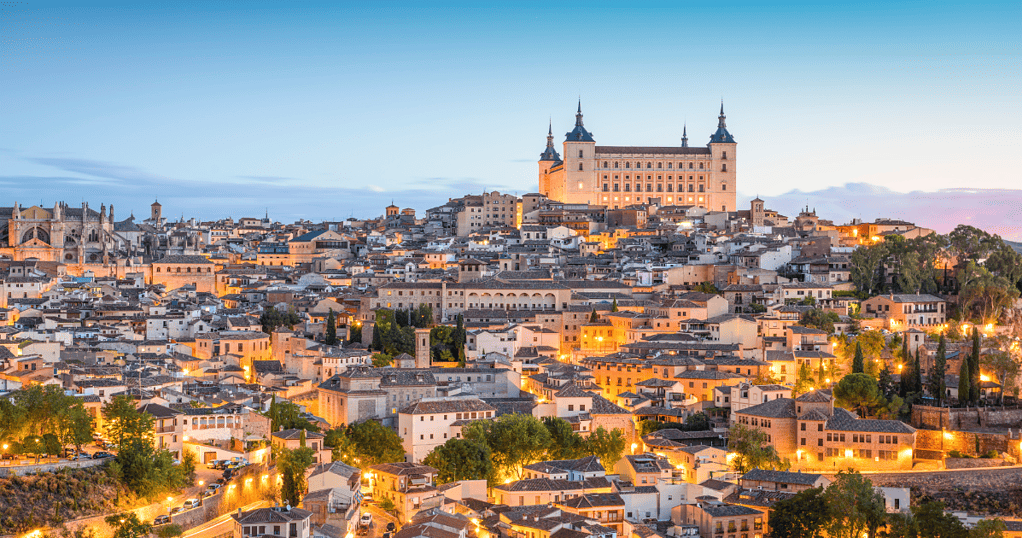
Toledo was the capital of the Spanish empire until the mid-16th century. The Moors, Jews, and Christians lived (for the most part) in harmony for centuries. Toledo is often called the city of three cultures. The synagogue, cathedral, and alcazar fortress are examples of architecture from each group.
Tagus River flows around Toledo’s three sides, partially encircling it. A medieval wall protects the 4th side. A maze of narrow streets awaits you inside the old town. Toledo’s signature treat, marzipan, comes from the Moorish heritage of the city. A day trip from Madrid to Toledo takes just 30 minutes by train or an hour by car.
9. Bilbao
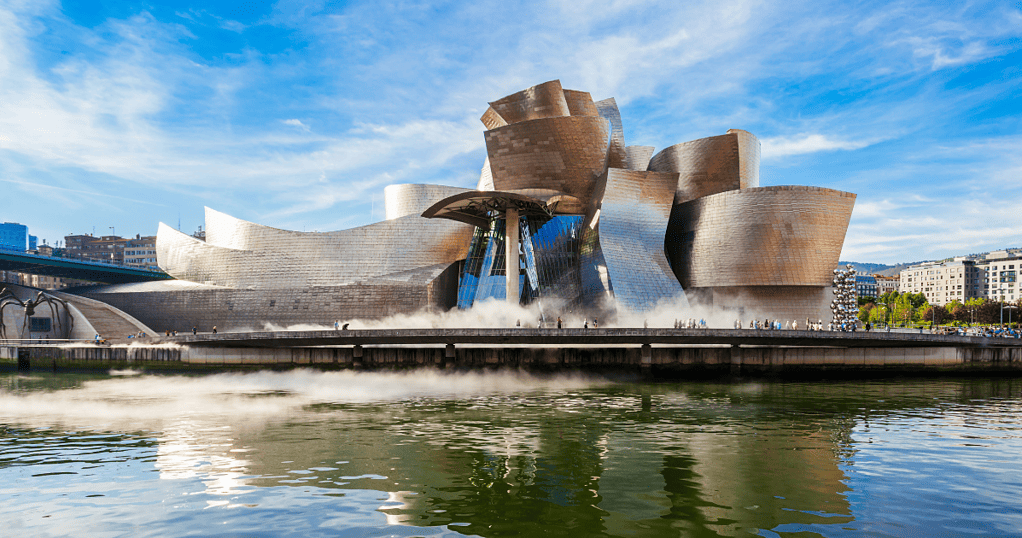
There is no better city to visit for art and architecture lovers than Bilbao. A gray, smog-filled industrial city has undergone a complete transformation over the past several decades. It all began when Frank Gehry designed the iconic Guggenheim museum. Consequently, the city experienced a regeneration that became known internationally as the “Bilbao effect.”
Other renowned designers and architects have also made their mark on the city, including Philippe Starck and Sir Norman Foster. However, Bilbao offers much more than discovering its new modern architecture. Known as “siete calles,” its charming old town has been completely renovated and is now a hotspot for Basque gastronomy. This is a great place to try some pintxos and taste some of the best food Spain has to offer.
10. Valencia
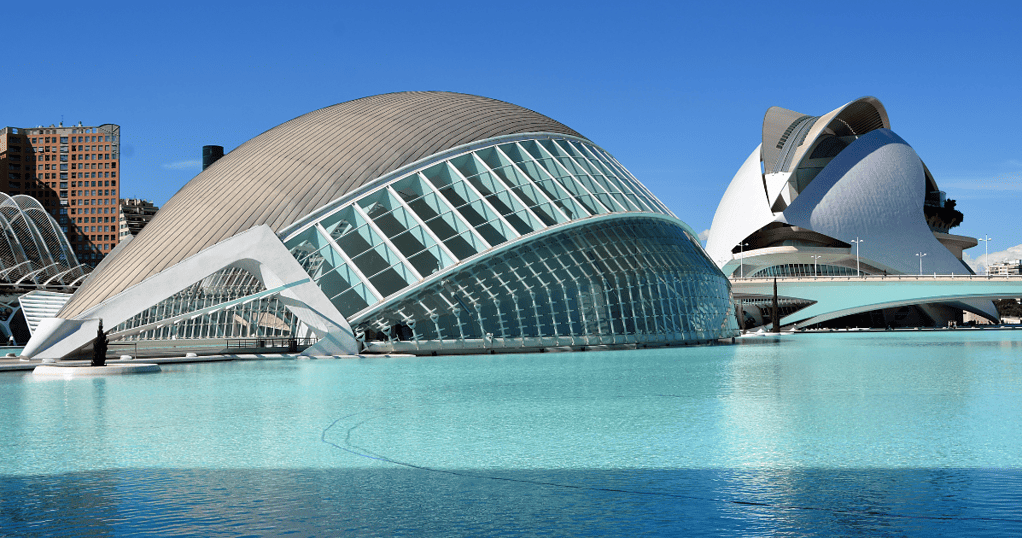
Valencia is Spain’s third largest city, located on its Mediterranean coast. One of the most notable features of the city is the futuristic City of Arts and Sciences. A number of buildings were designed by Santiago Calatrava in 1998 for this vast complex. An aquarium, a planetarium, an opera house, a concert hall, and several other buildings are located here. Make sure you see it all by renting a bike or taking a Segway tour.
The old town of Valencia is also a great place to explore, such as the Lonja de la Seda (silk exchange), which was built in 1482 during Valencia’s golden age. Valencia is one of the best cities to visit in spain due to its combination of modernity and tradition.
If you’re hungry, you can’t go wrong with paella in Valencia, the birthplace of the renowned rice dish. It’s true that paella can be found in tourist restaurants across Spain. The chances are, it hasn’t been freshly made (and is sometimes just microwaved). An iron pan is used to cook authentic paella over a wood fire. Traditionally, chicken and rabbit were used in paella, but seafood and vegetarian options are available today.
Final Thoughts
In the tapestry of Spain’s diverse cultural and geographical landscape, the choice of the best cities to visit in Spain is undoubtedly subjective, each destination offering a unique flavor for every traveler’s palate.
For the culinary enthusiasts seeking an unforgettable gastronomic journey, the Basque country stands out as a culinary haven. San Sebastian and Bilbao beckon with their tantalizing array of pintxos, showcasing the region’s mastery in transforming simple ingredients into culinary masterpieces. For those captivated by the enchanting echoes of Moorish history, Granada and Cordoba stand as living testaments to Spain’s rich Islamic heritage. On the other hand, if the allure of a sophisticated Mediterranean escape beckons, Palma de Mallorca emerges as the crown jewel of the Balearic Islands.
In the end, the best cities to visit in Spain are the ones that resonate with your personal interests and desires. Whether you yearn for the tantalizing tastes of the Basque country, the echoes of Moorish civilization, or the sun-kissed shores of the Balearic Islands, Spain generously opens its arms to travelers, inviting them to embark on a journey of discovery that transcends mere tourism, leaving indelible memories and a deep appreciation for the country’s rich tapestry of culture and history.


